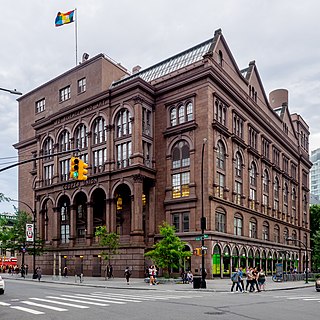
Cooper Union for the Advancement of Science and Art, commonly known as Cooper Union, is a private college on Cooper Square in Lower Manhattan, New York City. Peter Cooper founded the institution in 1859 after learning about the government-supported École Polytechnique in France. The school was built on a radical new model of American higher education based on Cooper's belief that an education "equal to the best technology schools established" should be accessible to those who qualify, independent of their race, religion, sex, wealth or social status, and should be "open and free to all".

The Wexner Center for the Arts is the Ohio State University's "multidisciplinary, international laboratory for the exploration and advancement of contemporary art."

Jonathan Edwards College is a residential college at Yale University. It is named for theologian and minister Jonathan Edwards, a 1720 graduate of Yale College. JE's residential quadrangle was the first to be completed in Yale's residential college system, and was opened to undergraduates in 1933.
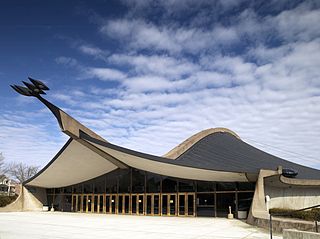
David S. Ingalls Rink is a hockey rink in New Haven, Connecticut, designed by architect Eero Saarinen and built between 1953 and 1958 for Yale University. It is commonly referred to as The Whale, due to its shape. The building was constructed for $1.5 million, which was double its original cost estimate. It seats 3,500 people and has a maximum ceiling height of 23 meters (75 ft). The building is named for David S. Ingalls, Yale class of 1920, and David S. Ingalls, Jr., Yale class of 1956, both of whom were hockey captains. Members of the Ingalls family were the primary benefactors of the arena. The building was included on the America's Favorite Architecture list, created in 2007 by the American Institute of Architects.

Paul Marvin Rudolph was an American architect and the chair of Yale University's Department of Architecture for six years, known for his use of reinforced concrete and highly complex floor plans. His most famous work is the Yale Art and Architecture Building, a spatially-complex Brutalist concrete structure. He is one of the modernist architects considered an early practitioner of the Sarasota School of Architecture.
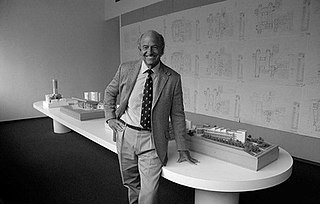
Charles Gwathmey was an American architect. He was a principal at Gwathmey Siegel & Associates Architects, as well as one of the five architects identified as The New York Five in 1969. Gwathmey was perhaps best known for the 1992 renovation of Frank Lloyd Wright's Guggenheim Museum in New York City.

The Yale School of Architecture (YSoA) is one of the constituent professional schools of Yale University. The School awards the degrees of Master of Architecture I, Master of Architecture II, Master of Environmental Design (M.E.D), and Ph.D in architectural history and criticism. The School also offers joint degrees with the Yale School of Management and Yale School of the Environment, as well as a course of study for undergraduates in Yale College leading to a Bachelor of Arts. Since its founding as a department in 1916, the School has produced some of the world's leading architects, including Norman Foster, Richard Rogers, Maya Lin and Eero Saarinen, among others. The current dean of the School is Deborah Berke.

The Yale School of Art is the art school of Yale University. Founded in 1869 as the first professional fine arts school in the United States, it grants Masters of Fine Arts degrees to students completing a two-year course in graphic design, painting/printmaking, photography, or sculpture.

The Sarasota School of Architecture, sometimes called Sarasota Modern, is a regional style of post-war modern architecture (1941–1966) that emerged on Florida's Central West Coast, in and around the city of Sarasota, Florida. It is characterized by open-plan structures, often with large planes of glass to facilitate natural illumination and ventilation, that address the unique indigenous requirements of the regional climate. Many of the architects who pioneered this style became world-renowned later in their careers, and several significant buildings remain in Sarasota today.

1585 Broadway, also called the Morgan Stanley Building, is a 42-story office building on Times Square in the Theater District neighborhood of Manhattan in New York City. The building was designed by Gwathmey Siegel & Associates Architects and Emery Roth & Sons and was developed by David and Jean Solomon. 1585 Broadway occupies a site on the west side of Broadway between 47th and 48th Streets. The building has served as the headquarters of financial-services company Morgan Stanley since 1995.

The Boston Government Service Center (BGSC) is a state government complex in the West End of Boston, Massachusetts. The center was designed in the Brutalist style, led by architect Paul Rudolph. It is one of the major components of the Government Center complex in Downtown Boston. The complex is made up of two connected Brutalist buildings: the Charles F. Hurley Building and the Erich Lindemann Building, as well as a courtyard; sometimes included is the newer, 1998-built, Edward W. Brooke Courthouse.
Gwathmey Siegel Kaufman & Associates Architects LLC is a New York City-based architectural firm founded in 1967 by architects Charles Gwathmey and Robert Siegel.

The United States Mission to the United Nations (USUN) serves as the United States' delegation to the United Nations. USUN is responsible for carrying out the nation's participation in the world body. In 1947, the United States Mission was created by an act of Congress to assist the President and the Department of State in conducting United States policy at the United Nations. Since that time, USUN has served a vital role as the Department of State's UN branch. Today, USUN has approximately 150 people on staff who serve to represent the United States’ political, economic and social, legal, military, public diplomacy, and management interests at the United Nations.

Hoffmann Architects, Inc., d/b/a Hoffmann Architects and Engineers, is a private architecture and engineering firm based in New Haven, Connecticut, United States, with offices in New York City and Alexandria, Virginia. Founded in 1977 by Hungarian-born architect John J. Hoffmann, the firm specializes in the rehabilitation of the building envelope, including facades, roofs, plazas, terraces, and parking structures, as well as historic / landmark building restoration.
Juan Miró is a Spanish-American architect. He is Director of the Studio Mexico Program and a professor at the University of Texas at Austin. Professor Miró has directed Studio Mexico since 1998, a program that affords students the opportunity to travel to and explore Mexican culture through the study of architecture, drawing, and design. He teaches at the School of Architecture and his areas of interests are design and construction, Mexican architecture and architectural history, and the role of architects in the shaping of cities in the U.S. and abroad. He is particularly interested in looking at architectural history with the eyes of a designer.

William J. Rupp was one of the modernist American architects considered part the Sarasota School of Architecture.
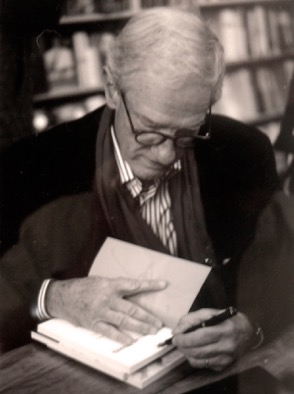
Errol Barron is an American architect, artist, and educator. A founding partner of Errol Barron/Michael Toups Architects, he is professor of architecture at Tulane University. In 1994 he was made a fellow of the American Institute of Architects with supporting letters from Charles Moore, Paul Rudolph, and Jean Paul Carlhian and in 2012 was awarded the Gold Medal for Architecture by the American Institute of Architects, Louisiana, for his "significant and enduring contribution to the advancement of architecture and his inspiring influence on the architects of Louisiana."
Buttrick White & Burtis was an architecture firm established in New York City in 1981 by the architects Harold Buttrick, Samuel G. White, and Theodore A. Burtis III. The firm remained active until 2002. Harold Buttrick left in 1998 to form Murphy Burnham & Buttrick. The architect Jean P. Phifer was a partner of the firm from 1989 until 1996, after which she served as president of the New York City Public Design Commission from 1998 to 2003. The architect Michael Dwyer was associated with the firm from 1981 to 1996. The architect and educator William W. Braham was associated with the firm from 1983 to 1989. In 2002, Buttrick White & Burtis merged with Platt Byard Dovell to become Platt Byard Dovell White.

G. P. Schafer Architect is a New York City-based architectural firm established in 2002 and led by founder and principal Gil Schafer III. The firm's work has been published in numerous magazines and journals such as Architectural Digest, Town & Country, and Veranda, in theThe New York Times, and in books on classical architecture, residential design, historic restoration, and interior design.
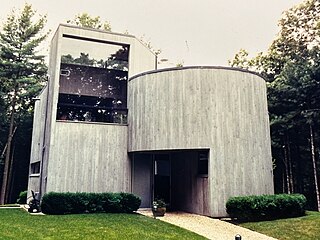
Joseph Sedacca Residence or Sedacca House in Northwest Harbor, New York is the third residential house designed by the American architect Charles Gwathmey (1938–2009).


















